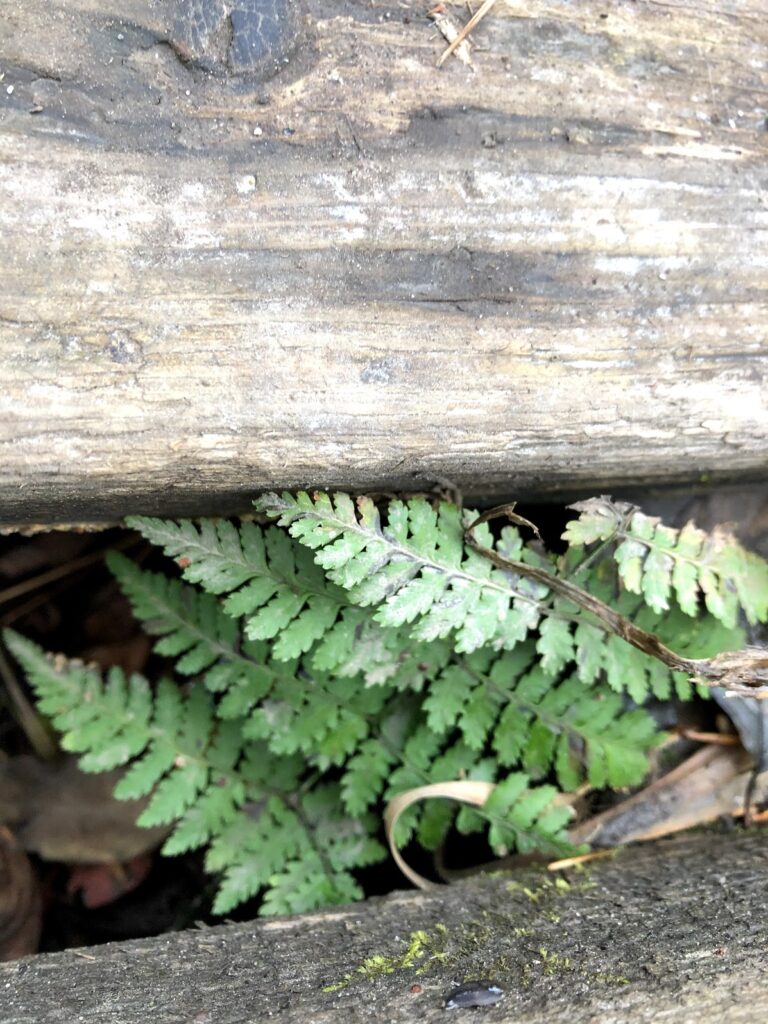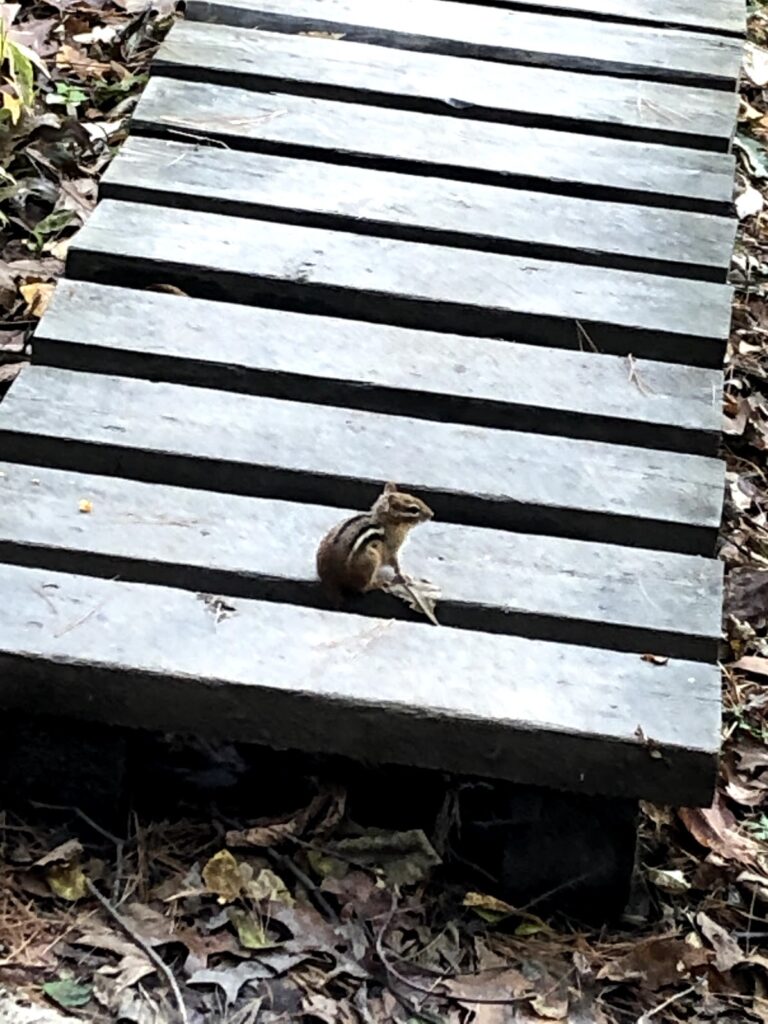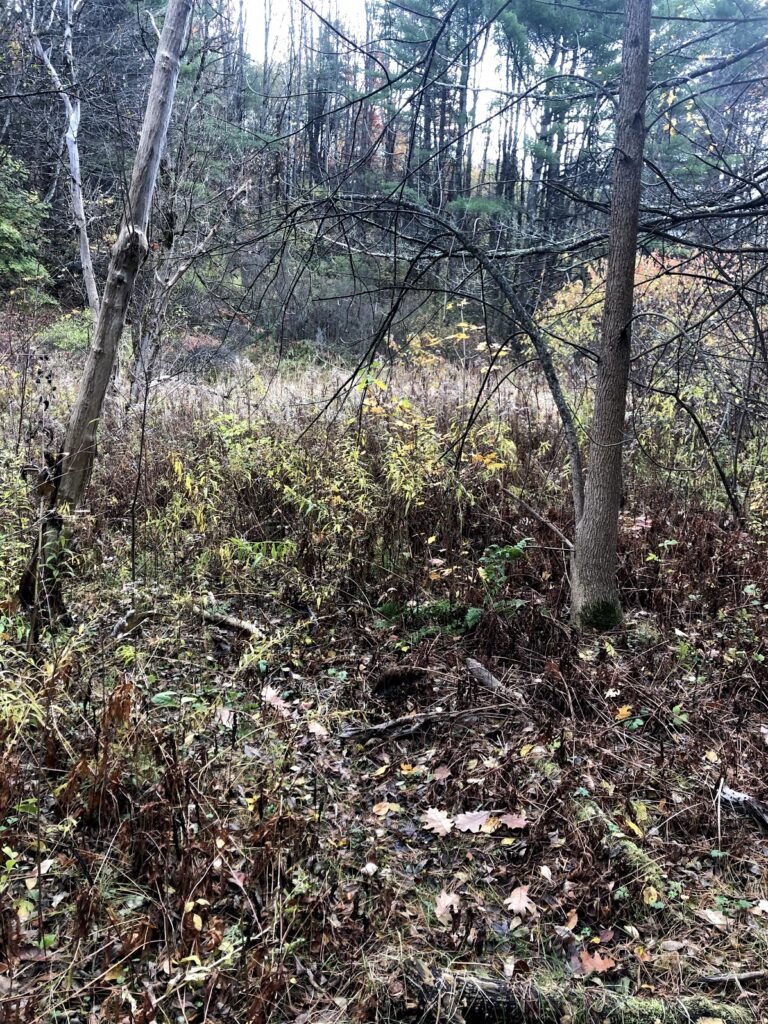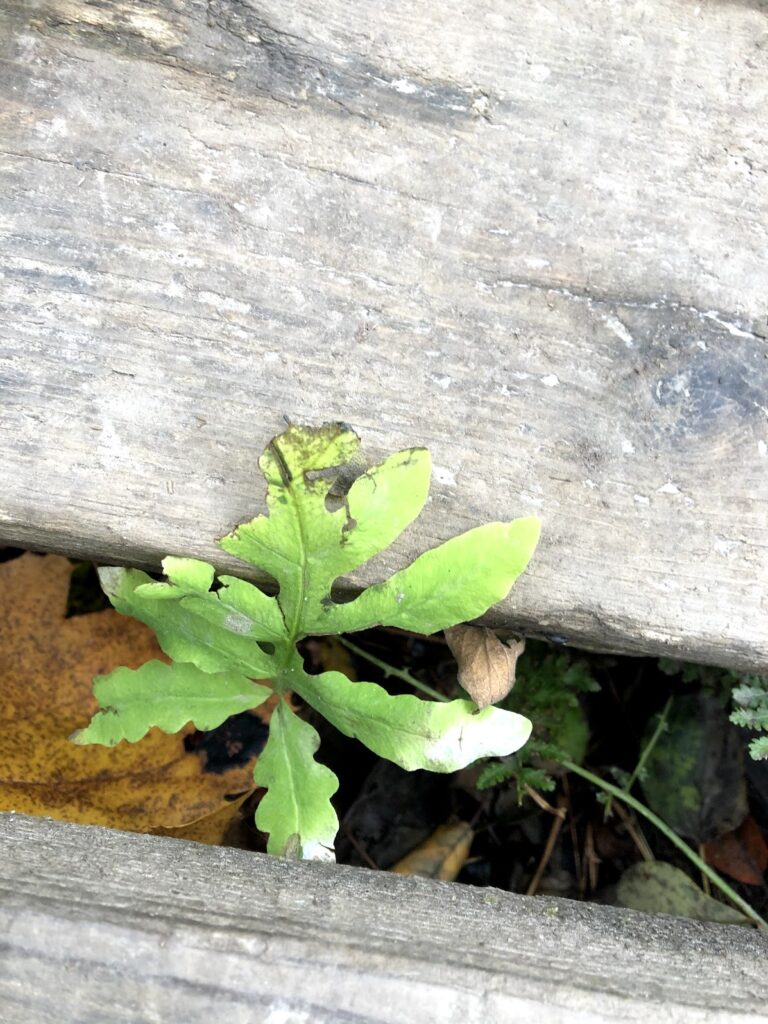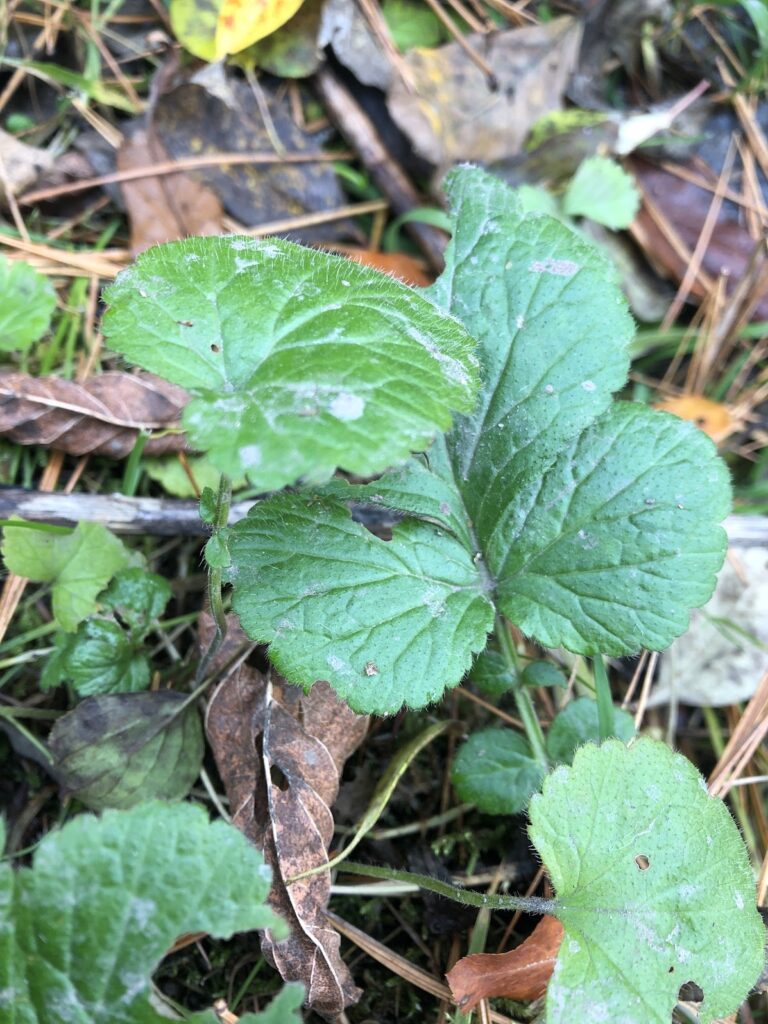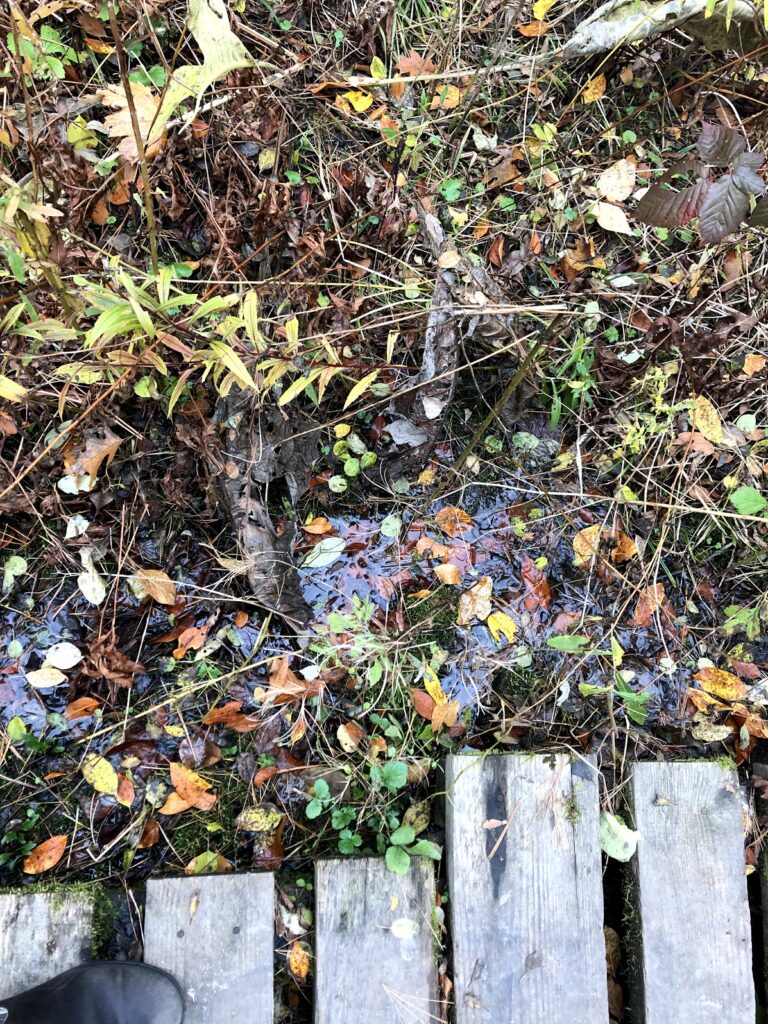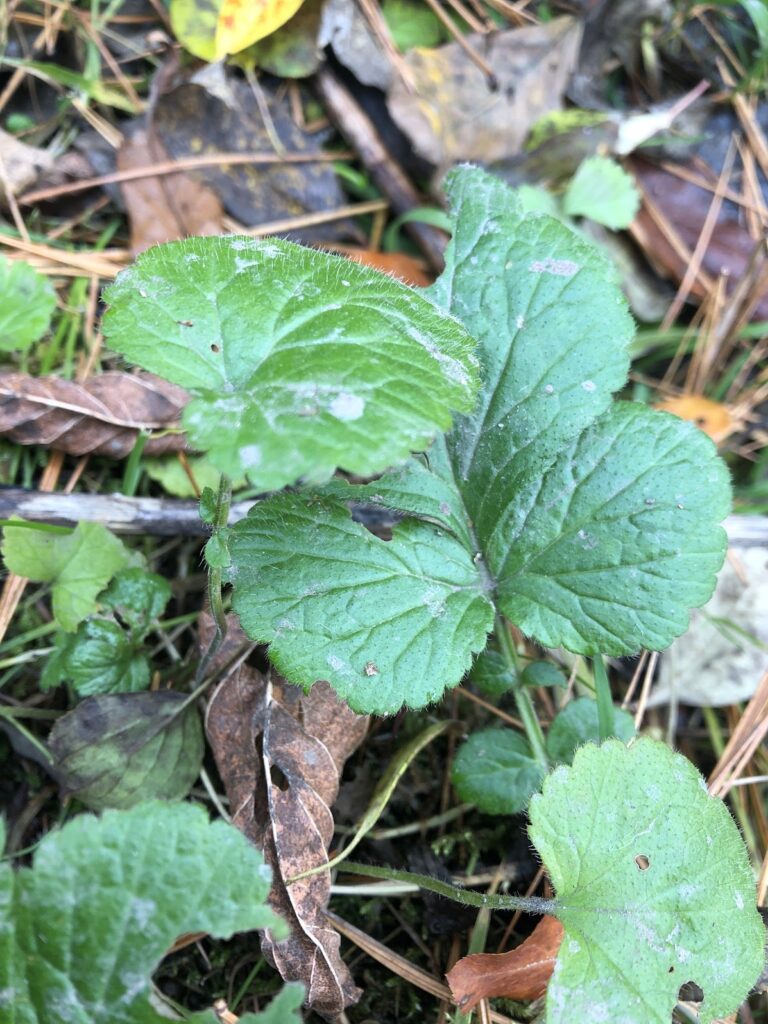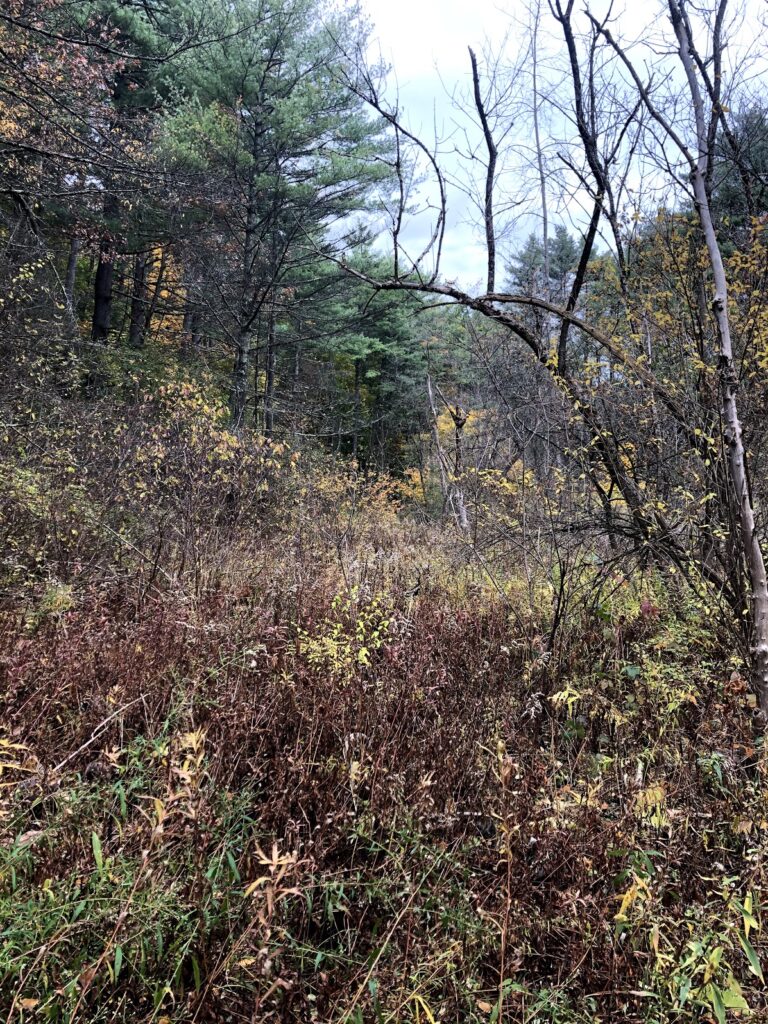
Today on my visit to Centennial Woods I found myself captivated by all of the leaf litter on the ground. Many different types of leaves lay in piles, some of them half-buried in mud, others tucked under plants that have yet to wither for the winter. Most of the ground vegetation am I site had lost all of its colors and turn brown, but remain standing. this meant that the area was full of Long Tall reddish-brown sticks standing straight up. Beneath these plants lay a layer of leaf litter and small green plants that couldn’t have been more than 3 in tall.
Along the south side of the Footbridge a young Norway maple study, it’s yellow leaves stretching only five feet Into the air. even though it’s quite short it instantly catches your eye being one of the only colorful things left.
Under the Footbridge I found both narrow Beach Ferns and the sensitive fern, the bridge provides them protection so they are still able to grow in the changing weather.
The eastern white pines that stand along the back of my sight have needles at the top but many have fallen, mixed in with the leaf litter we’re pine needles. The pine trees stand strong in the winter, their minimal change making them a pillar of stability for the forest ecosystem. In the branches of these trees a chickadee bird. Able to be heard her quite a ways the small bird’s chirp were one of the few sounds.
The only other animal I saw today was a small Eastern chipmunk, scampering around the area right as I entered. She quickly dashed away for protection but could be heard scampering through the Leafs for a minute or so afterward.
My site hasn’t changed much in the last 20 days, they’re definitely more leaves on the ground and more mud next to the path. But the levels of vegetation look rather similar. And the eastern pines have changed very little. The biggest thing I noticed was the quiet today. There wasn’t the sound of bugs Orbeez buzzing around my site. The winter has seemed to make everything quieter.
I’m sure that the increase in water flow will affect my sight, dragging away is topsoil and making it a less stable environment.
The six organisms I looked map:
- eastern chipmunk (Tamias striatus)
- Sensitive fern (Onoclea sensibilis)
- Narrow beech fern (Phegopteris connectilis)
- Blacked capped chickadee (Poecile atricapillus)
- Eastern white pine (Pinus strobus)
- Norway maple (Acer platanoides)
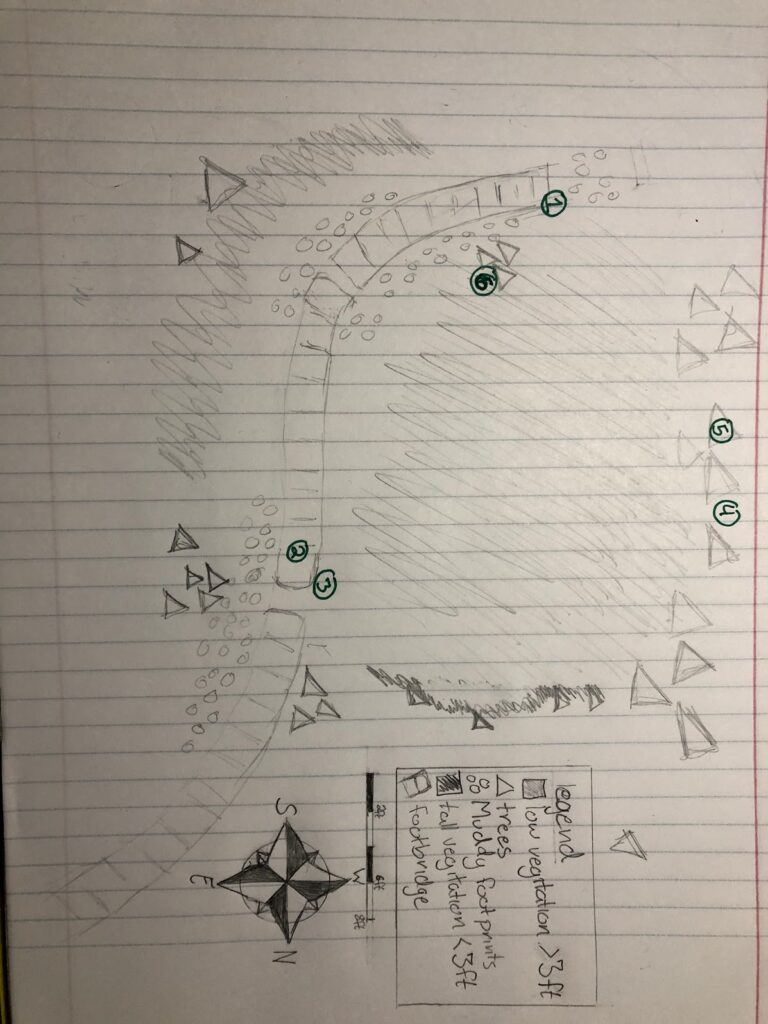
I greatly enjoyed mapping my site. It forced me to look at it from a different perspective. I realized how much of a wall was made by the eastern white pines in the back and I feel like I got to really know the place. Having to draw the path that I always blindly followed made me really applicate the natural curves of the land that the path adheres to. After making this map I feel like I understand the site better.

